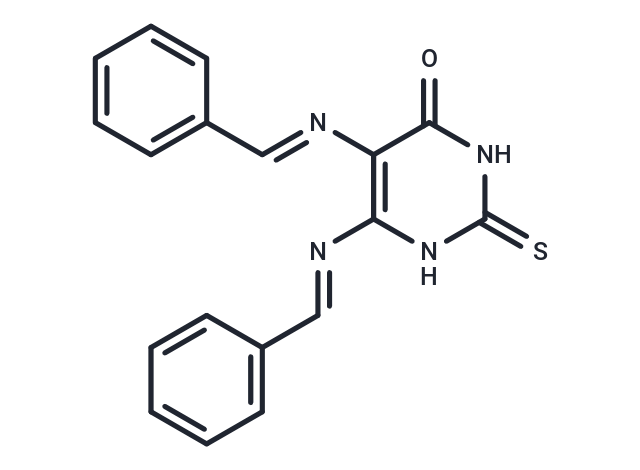Shopping Cart
- Remove All
 Your shopping cart is currently empty
Your shopping cart is currently empty

SCR7, a specific DNA Ligase IV inhibitor, blocks nonhomologous end-joining (NHEJ).

| Pack Size | Price | Availability | Quantity |
|---|---|---|---|
| 1 mg | TBD | 35 days | |
| 5 mg | TBD | 35 days | |
| 10 mg | TBD | 35 days | |
| 25 mg | TBD | 35 days |
| Description | SCR7, a specific DNA Ligase IV inhibitor, blocks nonhomologous end-joining (NHEJ). |
| In vitro | In a Swiss albino mouse model loaded with Dalton's lymphoma, intraperitoneal injection of SCR7 (20 mg/kg) fails to reduce tumor size. Conversely, in BALB/c mice, intraperitoneal injection of SCR7 (20 mg/kg) enhances the cytotoxic effects of radiation, etoposide, and 3-aminobenzamide on derived tumors of Dalton's lymphoma cells. |
| In vivo | SCR7 exhibits significant inhibition of cell proliferation across various cell lines, with IC50 values reported as follows: 40 μM in MCF7 cells, 34 μM in A549 cells, 44 μM in HeLa cells, 8.5 μM in T47D cells, 120 μM in A2780 cells, 10 μM in HT1080 cells, and 50 μM in Nalm6 cells. |
| Kinase Assay | Complementation of SCR7 Inhibition with Puri?ed Ligase IV: Complementation experiment is carried out by adding increasing concentrations of puri?ed Ligase IV/XRCC4 complex (30, 60, and 120 fmol) along with the oligomeric DNA substrates (5' compatible and 5'-5' noncompatible ends) to the SCR7-treatedextracts. Reactions are incubated for 2 h at 25℃. The reaction products are then resolved on 8% denaturing PAGE. The gel is dried and exposed and the signal is detected with a PhosphorImager and analyzed with Multi Gauge (V3.0) software. |
| Cell Research | SCR7 is dissolved in DMSO and stored, and then diluted with appropriate medium before use[3]. Wild-type, AAVS1TLR HEK293 and mouse NIH3T3 cells are maintained in DMEM supplied with 15% FBS, cells are passaged three times per week. The mouse Burkitt lymphoma cell line, generated from a Burkitt-like mouse lymphoma is maintained in DMEM supplied with 15% FBS, 2 mM HEPES, 2 mM sodium pyruvate, 2 mM L-glutamine, and 1× NAA, beta-mercaptoethanol and passaged four times per week. For puromycin selection, mCherry+ cells are sorted, seeded at 103 cells/well and selected with 3 mg/mL of Puromycin for 2 weeks. Then colonies are counted and single cells are sorted. The SCR7 inhibitor is purchased, 12 h after transfection these cells are maintained in complete medium supplied with 1 mM SCR7 inhibitor until analysis. At SCR7 concentrations of 60 mM and 10 mM, A reduction of transfection efficiency and of cell viability is observed[3]. |
| Molecular Weight | 334.4 |
| Formula | C18H14N4OS |
| Cas No. | 1533426-72-0 |
| Smiles | O=c1[nH]c(=S)[nH]c(\N=C\c2ccccc2)c1\N=C\c1ccccc1 |
| Relative Density. | 1.27 g/cm3 (Predicted) |
| Storage | Powder: -20°C for 3 years | In solvent: -80°C for 1 year | Shipping with blue ice. | |||||||||||||||||||||||||||||||||||
| Solubility Information | DMSO: 45 mg/mL (134.57 mM), Sonication is recommended. | |||||||||||||||||||||||||||||||||||
Solution Preparation Table | ||||||||||||||||||||||||||||||||||||
DMSO
| ||||||||||||||||||||||||||||||||||||

Copyright © 2015-2025 TargetMol Chemicals Inc. All Rights Reserved.